Hello, California, South Africa, and Hella Chenin!
Chenin Blanc is being redefined as a varietal category
Welcome to The Wine Clarion, a call to wine lovers who appreciate wines for what they are, not what they’re supposed to be. You know—things like artistry, terroir, originality, rather than sameness or predictability, the superficiality of ratings or the blindly followed status quo.
Most future entries in this new page will go to paid subscribers (if you are already a free subscriber carried over from my Culinary Approach to Wine in Restaurants page, you need do nothing if you prefer to wait for occasional public posts on The Wine Clarion). But if you don’t want to miss a thing because you, too, prefer real, authentic wines over fake or fatuous ones, I invite you to join our community by simply tapping the “Subscribe now” link below and choosing your option. Please help spread the word!
Electricity
If you missed the Hella Chenin Wine Fest in Berkeley this past May 3, you missed a jolly good show.
Actually, barely 400 Chenin Blanc lovers attended this combination seminar/walk-around tasting. There probably could have been more, but according to Peter Andrews, the primary organizer of this inaugural affair, paid tickets were capped off at 350 because, as he put it, “We wanted to make sure we have a controlled crowd and nothing goes wrong, and there can be more Hella Chenins… not just here, maybe also in South Africa!”
Andrews is the founder of Culture Wine Co., specializing in South Africa imports representing in the latest artisanal styles of wines coming out of that country, where the wine industry dates back to 1659. These, of course, are fraught times for small import companies of any sort. Let’s hope this is the first of many Hella Chenins, not a last hurrah.
My own perspective is always informed by sensory qualities of actual wines. If anything, over the past ten or so years, there has been dramatic uptick in innovative, handcraft wines coming out of the so-called Rainbow Nation; exciting products adding to the growing contemporary taste for minimal intervention, often “natural” styles, many of them farmed consciously with the usual litany of sustainable, organic, biodynamic or regenerative methodologies. Wines of place, defining themselves by what they are in the bottle, not according to hype.
And Chenin Blanc has been a clarion call for many of these South Africa producers. Most of the wines presented at the 2025 Hella Chenin were, in fact, Californian—Andrews’ founding partners in crime were Josh Hammerling of Hammerling Wines, and Mary Winters and Alex Pitts of Maître de Chai. Both brands are based in Berkeley; Hammerling furnishing the site of the 2025 Hella Chenin. Therefore the event was also a great opportunity to compare both California and South African styles of the varietal side by side. Truly educational.
My own motivation to attend Hella Chenin was this: Two years ago I had the opportunity to meet Adi Badenhorst, owner/winemaker of South Africa’s A.A. Badenhorst Family Wines (imported by Broadbent Selections), in the Victor, Lodi home of Tegan Passalacqua of California’s Sandlands and Turley Wine Cellars. I have met few vintners, in my nearly 50 years in the industry, bristling with as much energy and unmistakably revolutionary fervor as Badenhorst. He reminded me of the way leading California vintners used to talk about turning the American wine industry on its head back in the ‘70s and ‘80s.
I remember three of the A.A. Badenhorst wines in particular, all Chenin Blancs, each one blowing me away. By “blowing,” I do not mean by dint of sheer strength or opulence. In fact, I doubt any of those wines would have rated much more than 88 or 90 in conventional scoring systems, which tend to measure wines on the basis of volume rather than intricacy, transparency or authenticity (things that mean more, at least to me).
What I found compelling about A.A. Badenhorst Chenin Blancs was their delineation; led, primarily, by variations of minerality suggesting a flintiness (reminiscent, but not the same as, the type of flintiness you find in classic Montlouis or Savennières in France’s Loire Valley), subtle yet penetrating flower and honeyed scents, and a commonality of ringing acidity driving these dry style, moderately weighted wines from their tingling entry to long and lingering finishes (think of the 42-second, singular yet multi-instrument chord at the end of The Beatles’ “A Day In Life”).
I thought, at the time, that there are few white wines of the world that plug into the palate with as much electricity. In different ways, the A.A. Badenhorsts reminded me of some of the 10 to 20-year-old Hunter Valley Semillons, and the tightly wound Rieslings of Clare and Eden Valleys, I experienced in my first visit to Australia in 1993. Whites that do not wow you with size and scale, but rather with multifaceted sense of place—in the case of the A.A. Badenhorst Chenin Blancs, older “bush vines” dating beck to the 1960s or ‘70s, sitting on largely granitic slopes in Swartland.
Isn’t it ironic?
Today’s Chenin Blanc enthusiasts are undoubtedly a little geeky because the varietal is now a distinctly minority taste. Bottlings are no longer found on every store shelf in the nation. For me, it’s funny and maybe a little ironic, like the good advice you just didn’t take in Morissette’s “Ironic” (It figures!).
That is to say, once upon a time in America Chenin Blanc was actually something of a cool and hip varietal, playing a key part in the “white wine boom” of the late ‘60s and ‘70s. Bell bottoms may have never returned, but Chenin Blanc has at least recaptured a tiny corner of the market, whereas 20 years ago it was completely dead in the water (even diehard brands such as Napa Valley’s Chappellet stopped cultivating the grape between 1997 and 2007).
By the time I became a sommelier in 1978, various brands of Chenin Blanc were our second best selling wines in restaurants, after Robert Mondavi Fumé Blanc (we sold approximately 20 times more Chenin Blanc and Fumé Blanc than Chardonnay in the late ‘70s and first years of the ‘80s).
One of the most popular of the “new white wines,” in fact, was a blend of Chenin blanc and Ugni blanc (a.k.a., Trebbiano) grapes bottled by Wente Brothers as “Le Blanc de Blancs,” which customers seemed to like because it wasn’t quite as tutti-fruity as most California Chenin Blancs, which were typically finished medium-sweet (somewhere in the range of 1.5% to 2.5% residual sugar).
During the 1-hour Hella Chenin panel discussion manned by Tegan Passlacqua, Bernhard Bredell of South Africa’s Scions of Sinai Wines, and moderator/journalist Alder Yarrow, Passalacqua made note of the fact that Charles Krug Winery deserves credit for introducing America’s first commercial varietal bottling of Chenin Blanc in 1955. When Robert Mondavi split off from family operations in 1966, he began producing an even lusher and brighter style of medium-sweet Napa Valley Chenin Blanc.
By 1980 Chenin blanc was the most widely planted white wine grape in California (reaching some 37,500 acres); although technically, there was always more Thompson Seedless (still used in jug wine “Chablis” in those days) than Chenin blanc.
Because, in the formal restaurants such as the ones I worked, it behooved us to avoid retail-saturated labels during the early 1980s, I listed small winery brands specializing in what was labeled “Dry Chenin Blanc” (top brands included Grand Cru and Burgess Cellars), which were never really dry—typically somewhere between .7% and 1.5% residual sugar, not too different from demi-sec (i.e., “half-dry”) style Vouvray, which was also popular up until the mid-‘80s. The huge advantage was acidity becomes a sensory factor when sugar is reduced, and you could serve these wines to tables consisting of guests with both sweet and dry tastes.
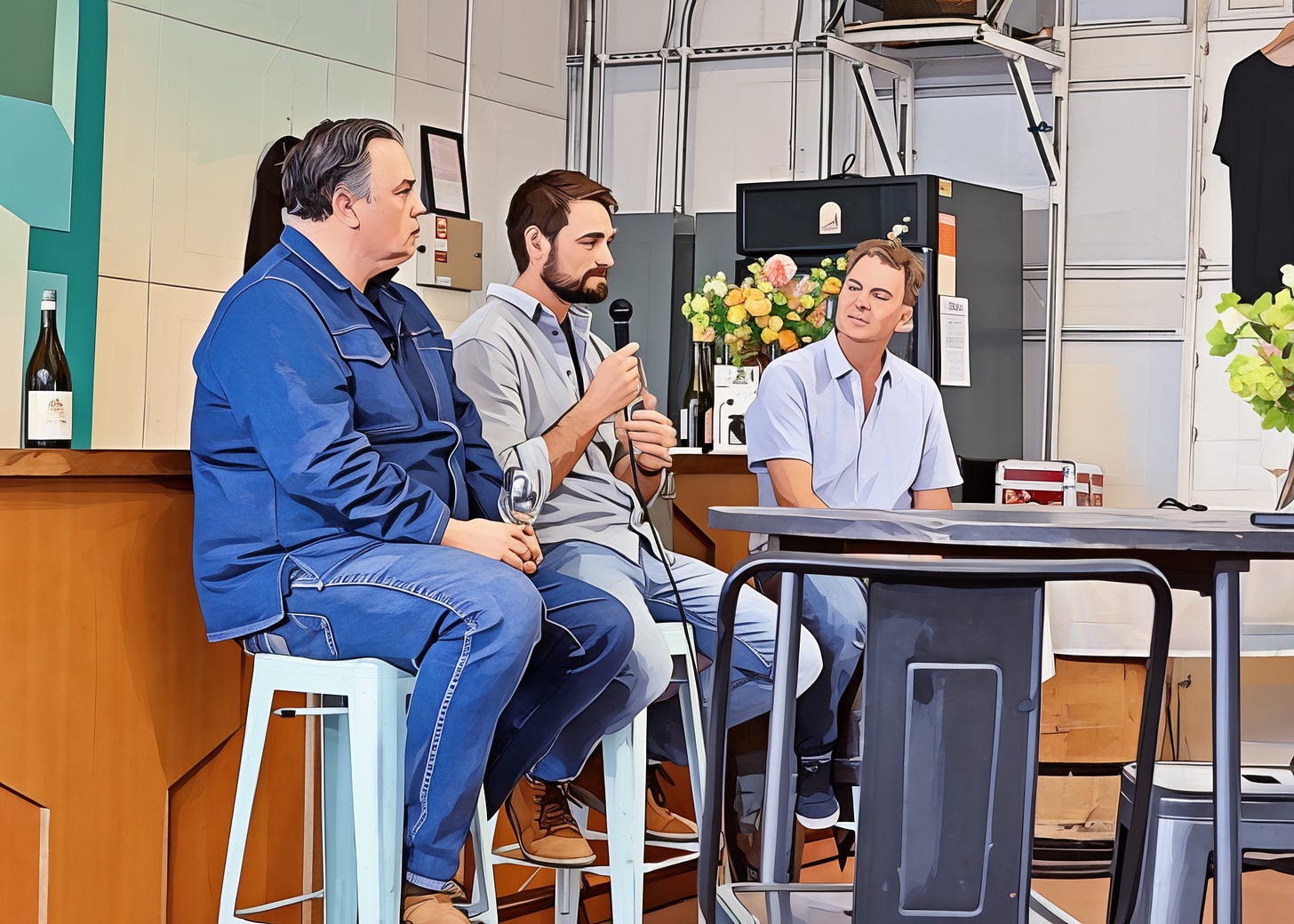
Death, resurrection, redefinition
The death knell for the varietal category in the American market was spelled by the sudden explosion of low to medium priced Chardonnay around 1984-1985. Consumers transitioning to dryer whites could still indulge in the fruit-framed qualities of typical Chardonnay, while consumers who retained a taste for sweetly fruited wines moved on to White Zinfandel.
California grape growers, who never really liked farming Chenin blanc (because of the cultivar’s propensity towards bunch rot, the grape was known in the industry as “Shitty Blanc”), gladly replaced their plantings with Chardonnay, Sauvignon blanc, and of course, Cabernet Sauvignon and Merlot. In recent years, total plantings of Chenin blanc in California has hovered around 4,000 acres.
As in all fashions, though, what’s old school often becomes new school, or retro-cool. The fact of the matter is, Chenin Blanc is now defined as a completely different wine from what it was 40 or 50 years ago. It used to be hard to argue with Robert Gorman, who noted in his classic Gorman on California Premium Wines (1976) that “Chenin Blanc seems to need a fair amount of residual sugar to bring out its delicate melon varietal flavor.”
It is crystal clear that today’s enthusiasts of the grape no longer prioritize fruitiness. They are appreciating the varietal for opposite reasons: Outward dryness, an unfruitiness, a perceptibly sharp acidity (old school Chenin Blanc’s varietal character was always defined as “soft”), and lightness rather than weightiness.
At the 2025 Hella Chenin, I made note of the fact that virtually all the wines were finished somewhere between 0 and just under 5 grams (still technically “dry”) of residual sugar. As a restaurateur I could always monitor consumer tastes as it slowly evolved. It was during the 1990s that I began to notice tiny perks of interest in dry styles of French Chenin blanc-based whites. We could finally begin to sell small amounts of Vouvray sec, Savennières and, a personal favorite, Montlouis.
One of my proudest moments was in the mid-1990s when I served Kermit Lynch a briny, saffroned, Pacific seafood studded bouillabaisse with a slightly briny, acid driven Montlouis—not to brag, but he flipped over this theoretically unlikely (i.e., a Loire River white matched with a Provence-inspired dish) combination.
It comes as no surprise, then, that Chenin Blanc is finally making a modest comeback, within the broader grouping of dry white wines. During the panel talk, I think Stellenbosch’s Bernhard Bredall made one of the more telling statements about the varietal’s resurgence: “I’m finding it’s restaurants that like to work with Chenin Blanc the most, precisely because it is one of the vibrant varieties.”
As high a level all the South Africa and California Chenin Blancs seemed to reach at the first Hella Chenin, I have to say that the one wine that impressed me the most was Bredell’s 2024 Scions of Sinai Granietsteen Vineyard Chenin Blanc: An absolute stunner of a wine, oozing with mineral, lime-like and honeyed qualities, a rapier-tart and high tension edginess offset by silken textures and the barest touch of green leafiness.
Later, during the walk-around, I cornered Bredell and asked him to elaborate on his observation on the culinary values of the market category. He was quite candid:
It is true, it is still hard to sell Chenin Blanc to sommeliers. There are so many other choices of wines to choose from, and most of them just haven’t gotten around to this wine yet. I find that it’s more effective to sell Chenin Blanc to restaurants where chefs have a say in the wine program. Every time I taste our Chenin Blanc with chefs, they go crazy. What they like is the salinity or minerality of the wine; the freshness of the acid and fruit, the zesty lemon/lime qualities, the touch of honeysuckle, and even the little bits of greenness they find in the wine.
You see, chefs like the versatility of wines that give multiple flavors. This is exactly how they cook. Chefs like to layer all the different flavors when they choose their ingredients, and it has to be subtle and balanced, a little like Chenin Blanc. A chef may use vinegars or umami ingredients which balance a Chenin Blanc’s mineral and acid components, little dabs of pea shoots that bring out the wine’s delicate “green” taste, creamy sauces that bring out the fruit character of the grape. Chenin Blanc is a chef’s wine!
Most Chenin Blanc enthusiasts do not, undoubtedly, think too much about the culinary value of the grape. They just want a wine that tastes great. Yet it is secondary and tertiary reasons that make a varietal category important. For instance, Bredell is vocal about very fact that Chenin blanc has also easily adapted to the warm Mediterranean climate zones common to South Africa and California—something not necessarily expected out of a cultivar that originated in cooler climate Loire Valley appellations.
In the panel talk, Bredell made a point of saying the grape “loves sunshine,” producing complexity in “the hottest climates,” whether in high production vineyards or in low yielding, old vine blocks. In conversation he added that it is this versatility that makes Chenin blanc an “ideal grape for climate change.” As wine regions around the world grow warmer, “a grape like Chenin blanc becomes more important because it will retain its freshness and balance in hot climates.”
Sensory notes
The 2018 Sandlands Amador County Chenin Blanc proffered by Passalacqua during the panel discussion demonstrated the differences between many of the California bottlings and those of South Africa. Sourced from head trained, own-rooted vines, the 7-year-old Sandlands is scented with flower petal and honey, lemony tart and thoroughly lip smacking in its dryness—cooly focused on a purity of fruit, shot through the glass like liquid sunshine.
At the tasting tables, an even older 2014 Sandlands Napa Valley Chenin Blanc, from a vineyard that since been uprooted, demonstrated the seemingly easy longevity of higher acid, bone-dry styles of the varietal; the 2014’s rounded, honeyed character still wound tightly by cords of tart-edged texturings.
Equally astounding as an older vintage, there was a 2016 Littorai “The Haven” Chenin Blanc from one of Ted Lemon’s biodynamically farmed vineyards in West Sonoma Coast that was a Dorian-Gray-ish clear straw color, lively with youthful acidity, and fresh as a daisy in its purely scented, lemon bar perfume. I can easily see this wine coming across every bit as fresh, brash and acerbic in another 10 years.
It is acidity that primarily drives mineral-related sensory qualities in just about all wines. Yet as vibrant in natural acidity as California Chenin Blancs can be, by and large it was the South Africa wines that expressed more non-fruit notes, whereas California bottlings seem to be primarily fruit driven. Wines like the 2023 A.A. Badenhorst “Golden Slopes” Swartland Chenin Blanc and the 2023 Luddite Bot River Chenin Blanc both went well beyond the honeyed fruit varietal profiles and into the realms of rocks, minerals or flint; more like a liquid mouthful of stones in the A.A. Badenhorst, while in the Luddite, distinctly spiced notes seemed to collide with a long and savory, umami-like meat and honeyed viscosity on the palate.
Not to be outdone, another one of the phenomenal, multifaceted “statements” made by the South Africa contingent was the 2023 Aslina Skin Contact Stellenbosch Chenin Blanc, a deep, ponderous wine, restrained in its honeyed mineral/citrus skin nose yet seemingly unending in its adhering and luxurious texturing on the palate.
An exception to this “rule” about South Africa wines being more minerally and less fruit driven than Californians on Hella Chenin day, however, might have been the 2021 Fine Disregard Chalone Vineyard Chenin Blanc, sourced from a tiny remnant of the historic Chalone block located on the Monterey County side of the Gavilan Mountain Range, originally planted in 1917 (!). In this wine, minerals definitely mingle with quietly floral, honeydew-like fruit in the nose, wrapped neatly in an ultra-fine, restrained, yet long and lingering, tart-edged palate feel. Wow.
Another impressive, multifaceted California iteration of the varietal was the 2024 Birichino Jurassic Vineyard Santa Ynez Valley Chenin Blanc; quite lavish in floral fruit in almost an old school way, yet dry and finely etched on the palate with both fruit and perceptible minerality, lingering with a light tartness.
Haarmeyer Wine Cellars—undoubtedly California’s leading specialist in vineyard-designate, terroir focused, minimal intervention style iterations of the varietal—was present and accounted for, showing no less than six different bottlings. It is truly hard to pick and choose a favorite; but if I did, it might be the 2023 Haarmeyer “Cresci” Chenin Blanc grown in Borden Ranch-Lodi, finished with the faintest whisper of perceptible sweetness (in 2023 Haarmeyer’s native yeast fermented Cresci cuvée inadvertently stopped fermenting before reaching dryness), ending up like a leaner style of old school Vouvray, bright and snappy with acidity on the palate.
More startling, however, was the 2023 Haarmeyer “Gold Hill” Chenin Blanc from an El Dorado vineyard which was as crisply balanced as any of the wines in the program, but vinified in a slightly oxidized fashion rendering lean, lemony, bruised apple-like qualities faintly suggesting the spiced nose of a white Pineau des Charentes. Fascinating.
Other California classics showing very well included a floral, mildly stony, medium weight 2024 Chappellet Pritchard Hills Estate Chenin Blanc, and a barely off-dry, crisp and honeyed 2023 Lang & Reed Norgard/Sterling Mendocino Chenin Blanc by this ever-dependable Napa Valley-based producer.
I am just mentioning a few of the highlights out of quite a few wonderful wines because, gosh darn it, I was never disposed towards being just another “wine reviewer” churning out long laundry lists of wines and descriptors with the usual dreary scores, and am certainly not going to start now.
Before closing, though, I feel compelled to mention one more Californian that was not varietal bottling, but rather a fascinating field blend: The 2024 Martha Stoumen “Out to the Meadow” from Suisun Valley, composed of Chenin blanc (63%), Vermentino (15%), Trousseau gris (13%), Green Hungarian (6%) and Chasselas Doré (2%). For pure drinking pleasure, this may have been the best wine of the day—bone dry yet super-spiced (clove, allspice), grapefruit skin, honey-on-tarte tatin and potpourri-like dried flower petal notes touching the nostrils and draping across the palate with sensuous, judiciously crisp qualities.
A helluva first vintage indeed for Hella Chenin!


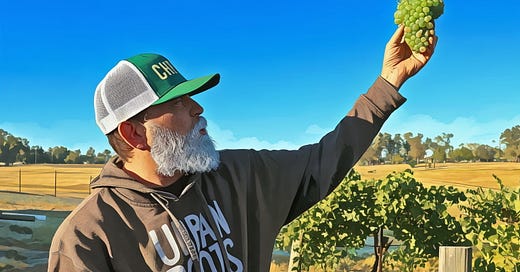





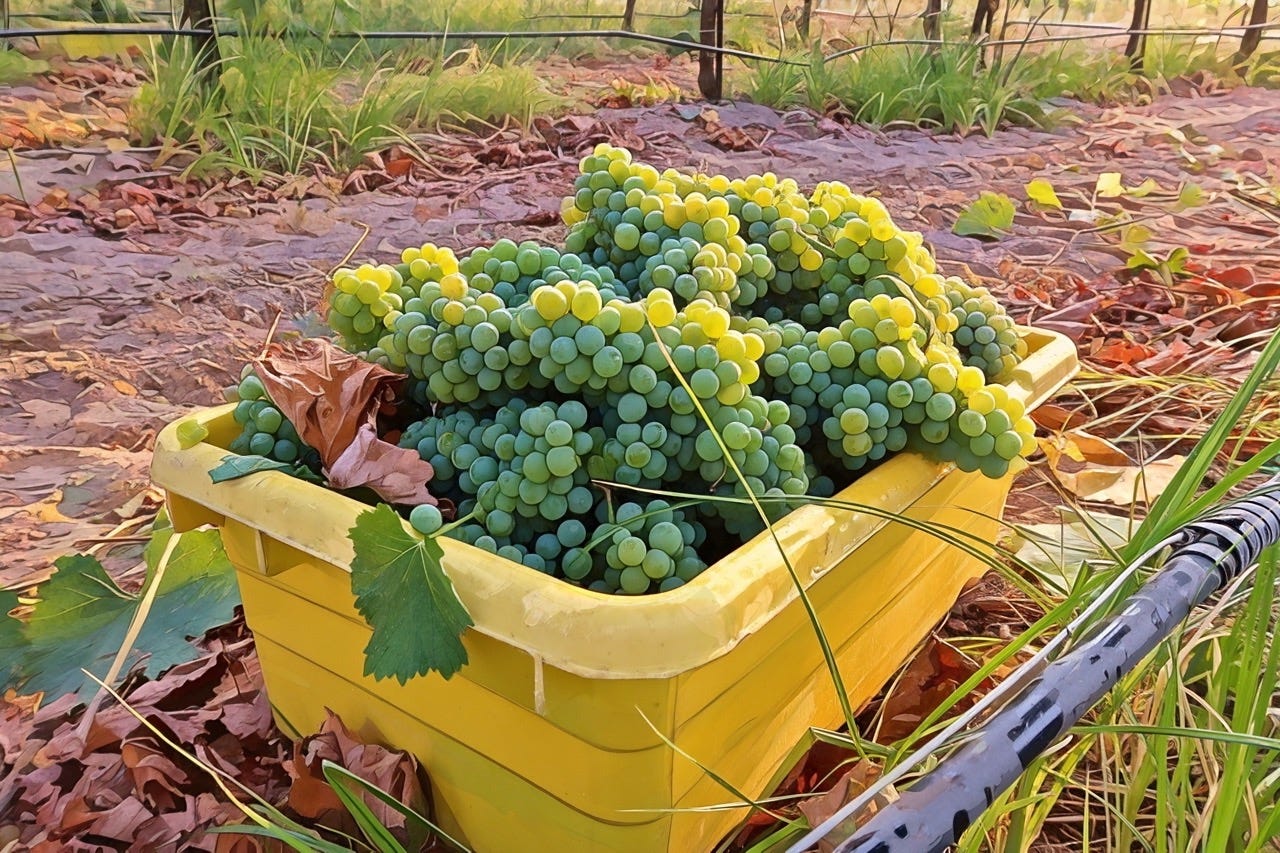
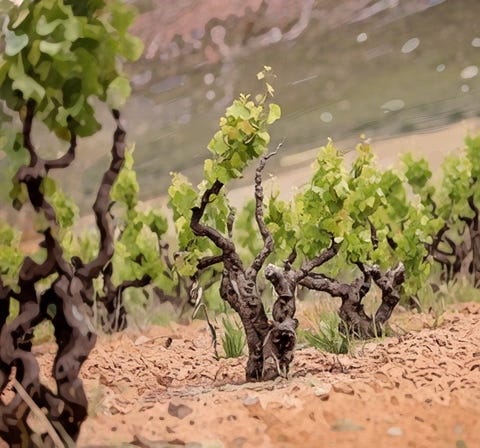
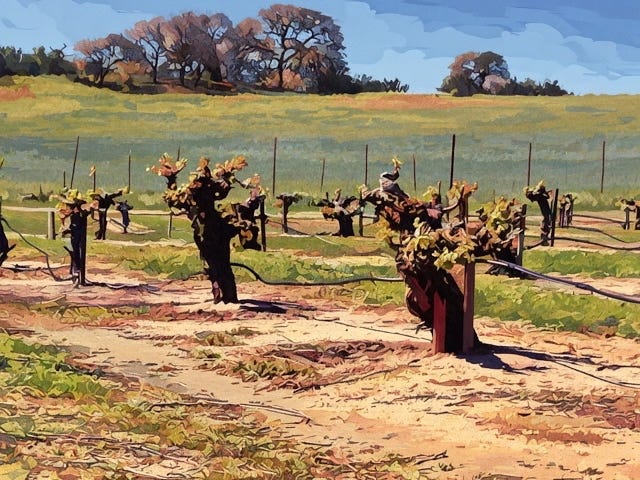
Randy, back in 1982 Mirassou was doing about 45,000 cases of off-dry CB from Monterey County a year. Volumes dove precipitously down shortly thereafter.
Thank you so much for taking the time to so thoughtfully enjoy and share Hella Chenin. We had an amazing time planning it - and are now hard at work getting ready for year two. 🇿🇦💪🏼🇺🇸